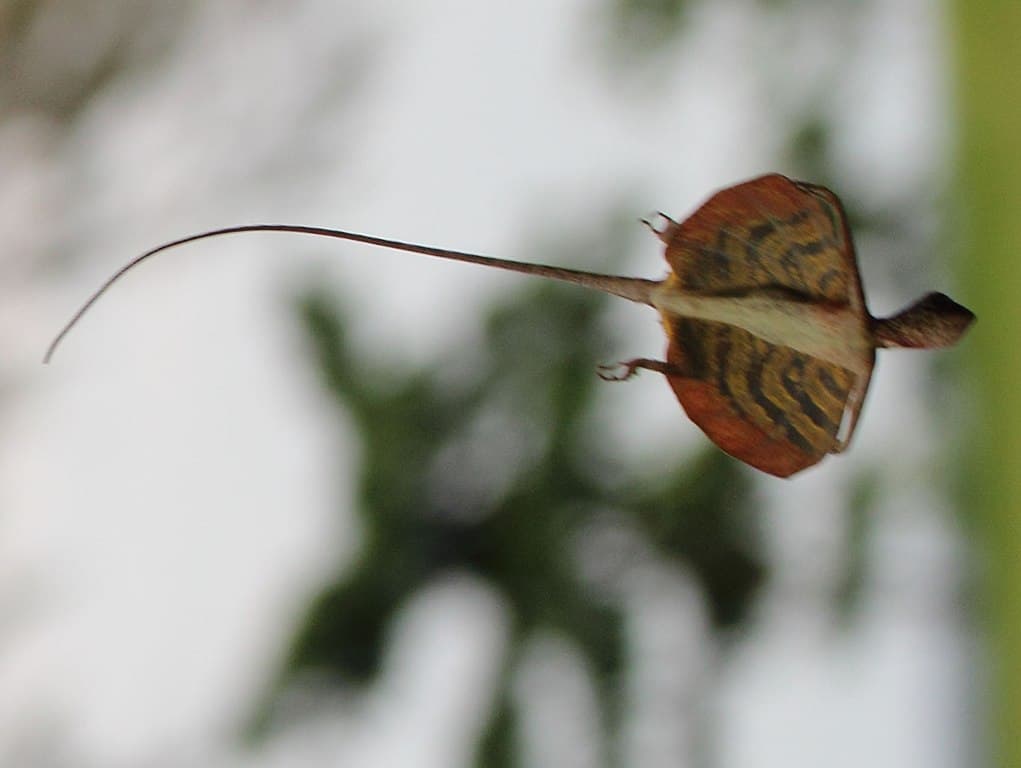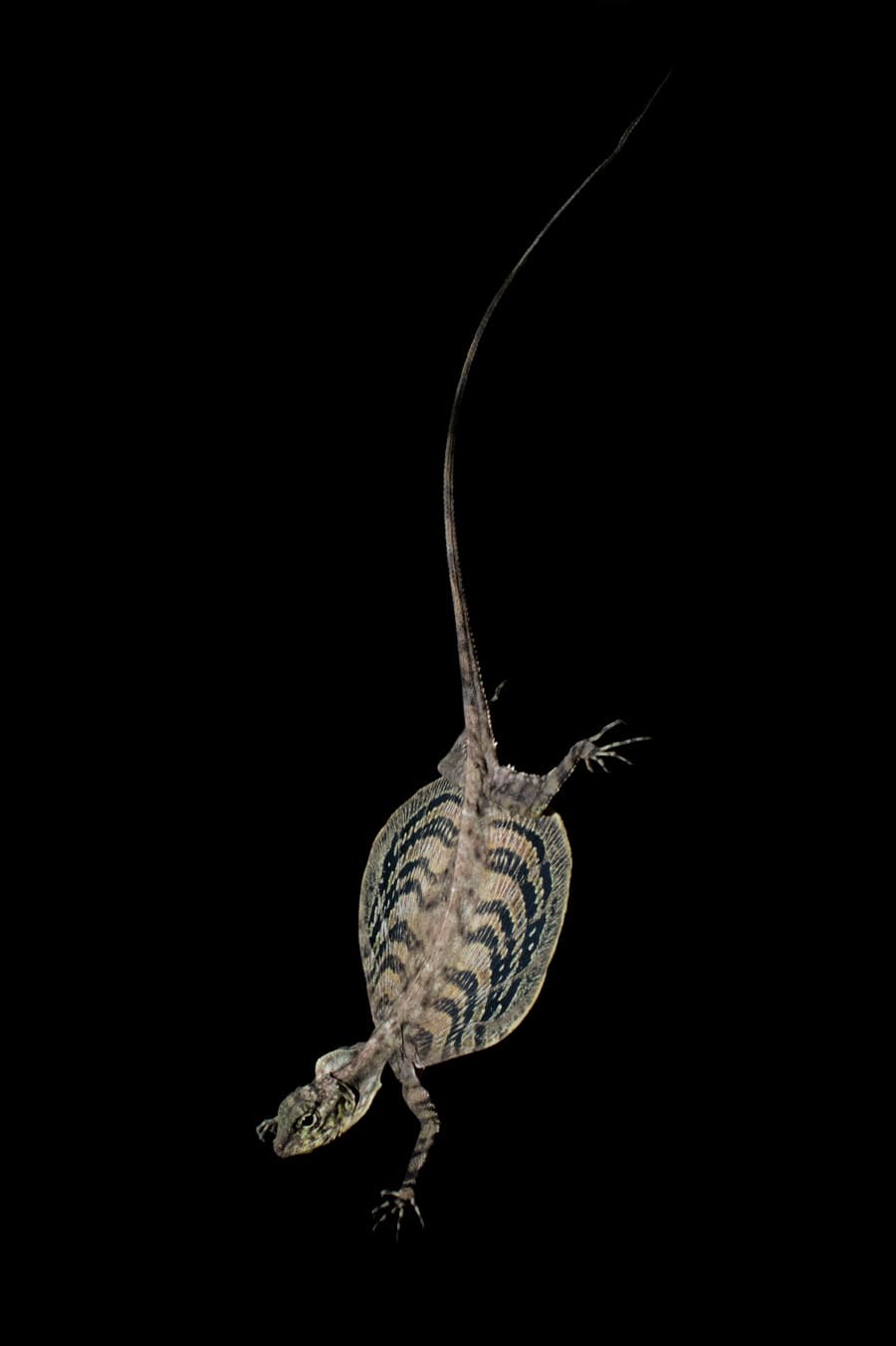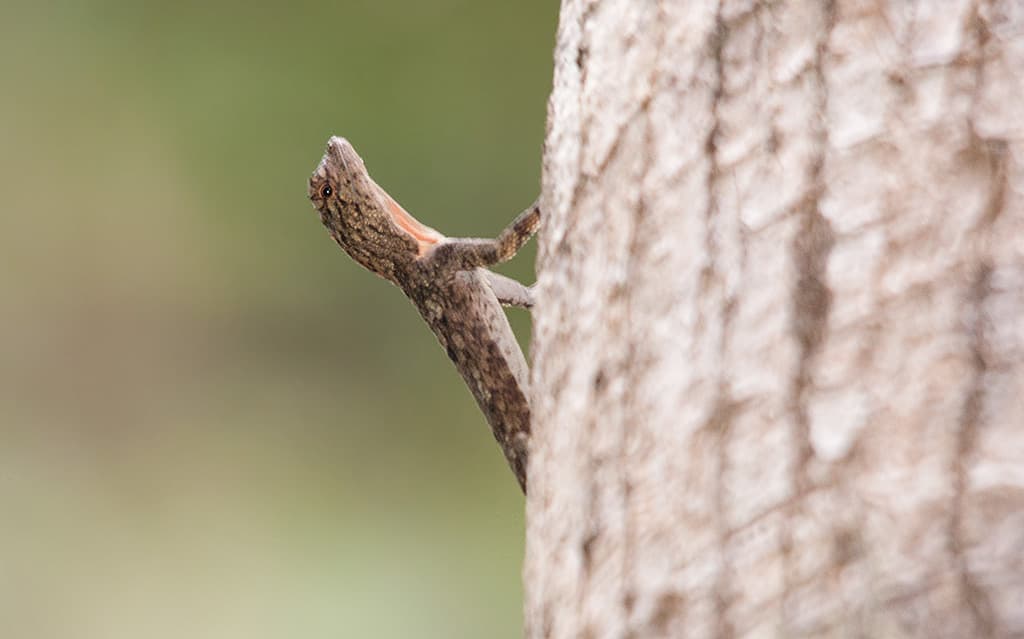According to the reports on biodiversity in 2016, there are 180 species of reptiles in Cambodia. As for the flying lizards (បង្គួយហោះ/បង្គួយស្លាប), there are 3 species with very little information. However, I still want to talk a little about them. Generally, flying lizards have a special membrane that can spread to hover from one high place to another. The 3 flying lizard species in Cambodia are:
Barred Gliding Lizard

Native to Southeast Asian countries, barred gliding lizards are found in Cambodia, Malaysia, Myanmar, and Thailand. Being just around 20 centimeters including the tail, their ability to fly keeps them from becoming snacks to predators. The fascinating thing about these flying lizards is that they can change course midair, maneuver, and steer as they fly. When a barred gliding lizard needs to fly, it reaches back with its arms to grab its patagia from its elongated ribs. They do so to spread the patagia forward so that they can start flying.
Indochinese Flying Lizard

The Indochinese flying lizard or Indochinese gliding lizard is a lizard species occurs only in Cambodia and southern Vietnam. The first discovery of this species was in 1928 in Bokor National Park, and later again in 2003 in Vernsai and Keo Seima National Parks. These arboreal lizards live in evergreen forests, and they rarely come to the ground.
Flying lizards have a “patagium” which is a winglike membrane that allows them to move from one tree to another. The patagium is dark brown near the edge and paler brown near the body of the lizard. It has six transverse pale-edged bands, and the underside of the patagium is yellowish-brown. If you look at the ventral surface, it is pinkish or yellow with the gular pouch and creamy yellow anteriorly.
An Indochinese flying lizard is small, with a body length of no longer than 20 centimeters. Not different from other flying lizard species, this one has a brownish-gray back with dots that allows it to blend with tree bark. This camouflage allows the lizards to be safe from predators and to ambush their own prey. Males have a dewlap that is wide at the base and decreases in width over its entire length.
Spotted Flying Dragon

As for this species, it is an agamid flying lizard species endemic to Southeast Asia. A spotted flying dragon has a grayish upper part with darker markings of a more or less distinct darker interorbital spot. There are also small round black spots on their wing membranes along with more spots on the gular appendage’s sides. Hence, the name. When it comes to diet, spotted flying dragons feed exclusively on ants and termites they can find in their habitats.
This lizard species has a set of elongated ribs with folds of skin in between that they can extend and retract. These folds of skin act as wings when unfurled which allows the dragon to catch the wind and glide. When they need steering, they simply use their long slender tails. The ability to fly is not only for mobility but also to chase rivals from their territory as well.
Related Post: Vulture Species In Cambodia
